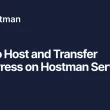For product marketing managers in B2B SaaS, few questions are as constant – or as complex – as this one:
Should we focus more on launching… or adopting?
The truth? We need both. But in many organizations, the balance tips heavily toward launching. We chase momentum, newsworthiness, a race with competitors, and internal validation – sometimes at the expense of sustained product usage and long-term growth.
In this blog post, I’ll explore why adoption is the silent growth lever, what pitfalls to avoid in over-indexing on launches, and how smart PMMs are balancing both using tiering, playbooks, and measurement.
The hidden cost of launches: Fatigue, noise, and misalignment
Launches are undeniably exciting. They bring teams together, generate buzz, and make your roadmap visible. But if every launch gets the same fanfare, they start to lose impact. Worse, they can create noise for both internal teams and customers.
Ask yourself (and your team):
- Are we launching more than our audience can absorb?
- Are we properly measuring success beyond launch day (e.g., actual product adoption, not just pageviews)?
- Are CS, sales, and marketing getting overwhelmed by launch comms and enablement?
The cost of launch fatigue is real, and it can distract from the steady, strategic work of driving actual product usage.
Adoption: The silent growth lever
While launches create awareness, product adoption and ‘habit’ drive retention, expansion, and advocacy. Yet many organizations don’t treat adoption as a core GTM discipline – until the churn rate starts to increase.
My best advice? Don’t let your churn numbers kick off your product adoption strategy; instead, proactively balance product adoption from early stages.
Here are key questions to reflect on when building a product adoption strategy.
- Are we providing feature education to customers after launch?
- Are we equipping CS and sales with the right assets and narratives to drive usage? Or do we just provide enablement on new launches?
- Do we track lagging indicators like time-to-value, feature activation rates, first-time users, returning users, or breadth and depth of usage?
Adoption work isn’t flashy, but it compounds. It’s often the fastest and steadiest route to retention.
6 best practices to balance launches and adoption
Here’s a practical playbook to help PMMs find the balance – and drive growth through both motion types.
1. Tier your launches 🎯
Not every product update deserves the same level of effort. A tiered launch framework ensures you scale your involvement based on impact.
Example tiering system:
|
Tier |
Launch type |
PMM effort across marketing channels |
|
Tier 1 |
Major product/platform shift Growth opportunity |
Full GTM plan, from PR and social to webinar and enablement |
|
Tier 2 |
Strategic, innovative feature launch Competitive edge/differentiator Growth opportunity |
Social CS/Sales assets |
|
Tier 3 |
‘Quality-of-life’ updates Expected by the market Table stakes Retention opportunity |
Release notes Tooltips Light training Quick mention in an email |
|
Tier 4 |
Auto-shipped customer-facing features Must-do UX improvements Bug fixes Retention opportunity |
Release notes |
2. Adoption playbooks 🧭
Launch day is just the start. The real work begins after, when users need to make your product part of their routine. Adoption is a long game that stretches from day two all the way through renewal (or churn).
To keep users engaged beyond launch hype, you need smart campaigns and plays that nudge, guide, and remind them why your product matters for the long term, not just at kickoff.
Here are some practical ways to make adoption stick:
- Nudge series: Targeted emails for inactive users of high-value features
- CS plays: Talk tracks and one-pagers for QBRs or success calls
- Webinars: E.g., “3 ways power users use [Feature X]”. Bring a real customer advocate
- In-product communications: Highlight new workflows or advanced use cases
- Lifecycle marketing: Trigger emails based on tenure and product actions taken or not taken (E.g., Day five: “You haven’t completed your onboarding tasks, and why it matters…”)
3. Success metrics for adoption 📊
What you measure is what gets your attention. To boost adoption, you need to track both leading and lagging indicators. By keeping an eye on the right metrics, you can spot what’s working, what needs tweaking, and where to focus your energy for the biggest impact.
Here are the key numbers to watch:
- Feature MAUs
- Time to first value (TTFV)
- Percentage of customers using feature X
- First-time and returning users
- Retention correlated with feature usage
- Customer maturity score
Partner with CS ops and product teams to surface this data in dashboards. Use it to inform both adoption campaigns and roadmap prioritization. Tools like Pendo or Pigment can be extremely helpful.
4. Evergreen customer education and enablement ♻️
Not every feature needs a campaign. Some just need to be discoverable, useful, and reinforced over time.
Your evergreen toolkit:
- Onboarding flows
- Lifecycle emails (e.g., “Feature X you might’ve missed”)
- Self-serve demos and video walkthroughs
- In-product guides
- CS enablement playbooks
5. Customer voice integration 🎤
Nothing drives adoption like hearing from another customer who’s winning with the product.
Ways to bring customer voice into your GTM:
- 60-sec success videos featuring real workflows
- Mini case studies embedded in feature launches or QBR decks
- Webinars where customers articulate how the product helps them achieve their business goals
- Testimonials and screenshots in nurture emails and product docs
6. Quarterly GTM planning and advisory boards 🧠
The smartest PMM teams plan their adoption and launch efforts every quarter, making sure they line up with company goals. Using a simple GTM scorecard can help you figure out what to tackle first.
Also consider creating a solutions advisory board – a curated group of engaged customers who preview your roadmap, provide feedback, and help shape your messaging.
- Monthly or quarterly cadence
- Focused on specific solution areas
- Great source of customer proof and pilot users
- Can be virtual and much less expensive than traditional customer advisory boards
Final thoughts 👇
You don’t have to choose between launching and adopting – but you do have to prioritize.
Launches create momentum. Adoption creates growth. To win, PMMs should orchestrate both with practical frameworks, tools to scale, and cross-functional alignment.
Ready to rebalance your GTM efforts?
If you want more real-world GTM insights like this, feel free to connect with me on LinkedIn. Let’s keep the conversation going.
About the author
Cris Thome is a PMA Ambassador and Global B2B SaaS Product Marketing Leader with deep expertise in go-to-market strategy and background in retention and lifecycle marketing.
She has led GTM expansion efforts across North America and Europe in MarTech, HR Tech, and Multi-Location Marketing.





![impact-of-ai-on-product-management-[malte-scholz]](https://prodsens.live/wp-content/uploads/2023/11/16921-impact-of-ai-on-product-management-malte-scholz-380x250.jpg)